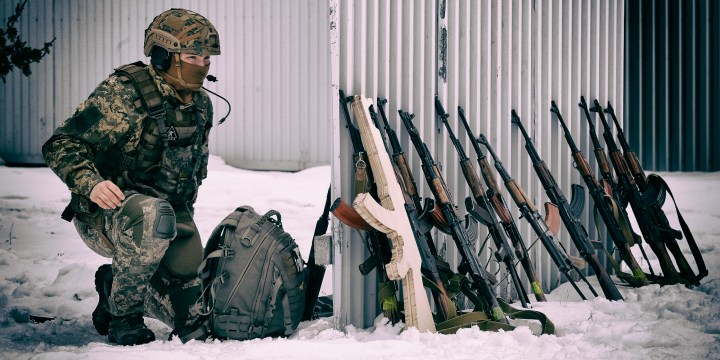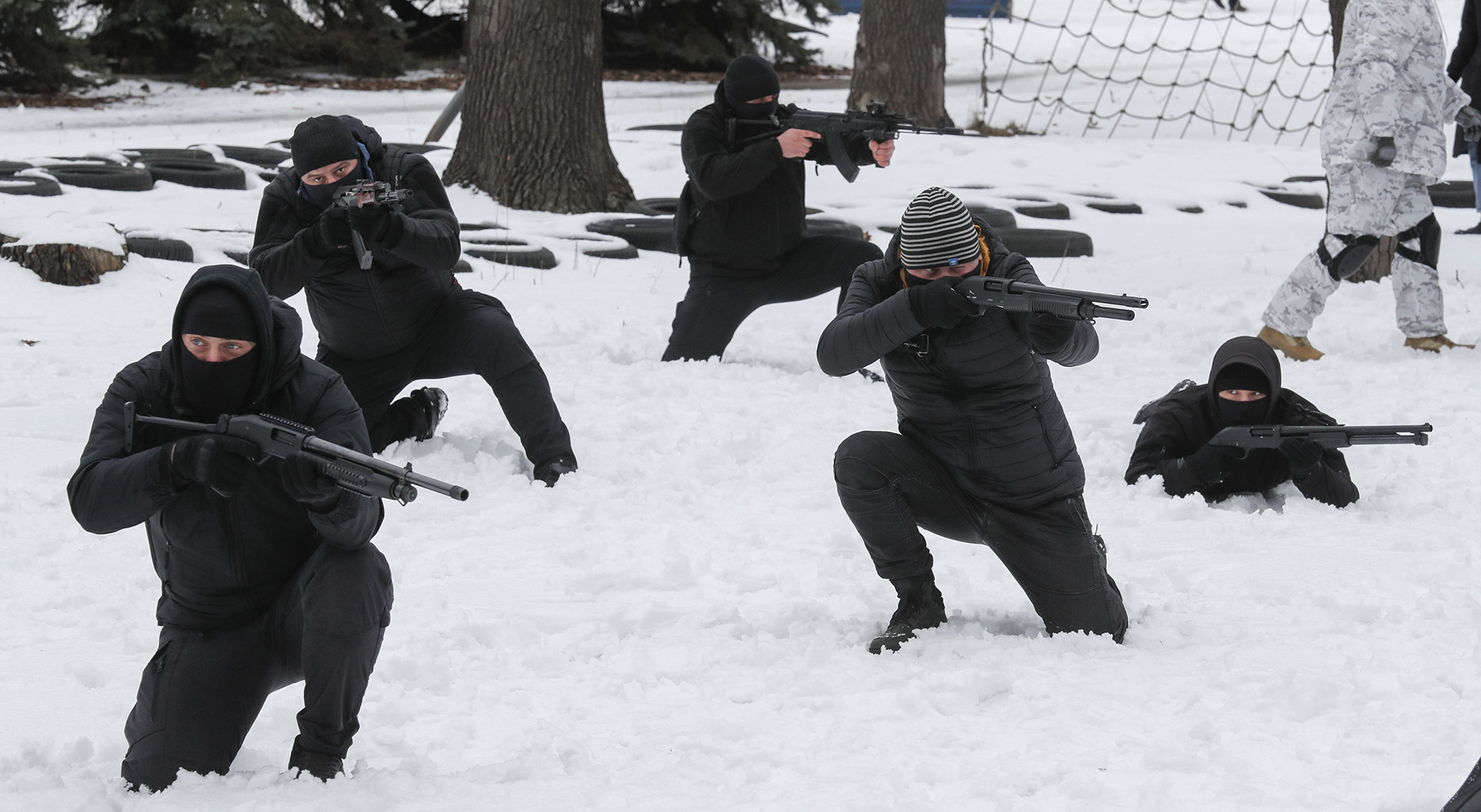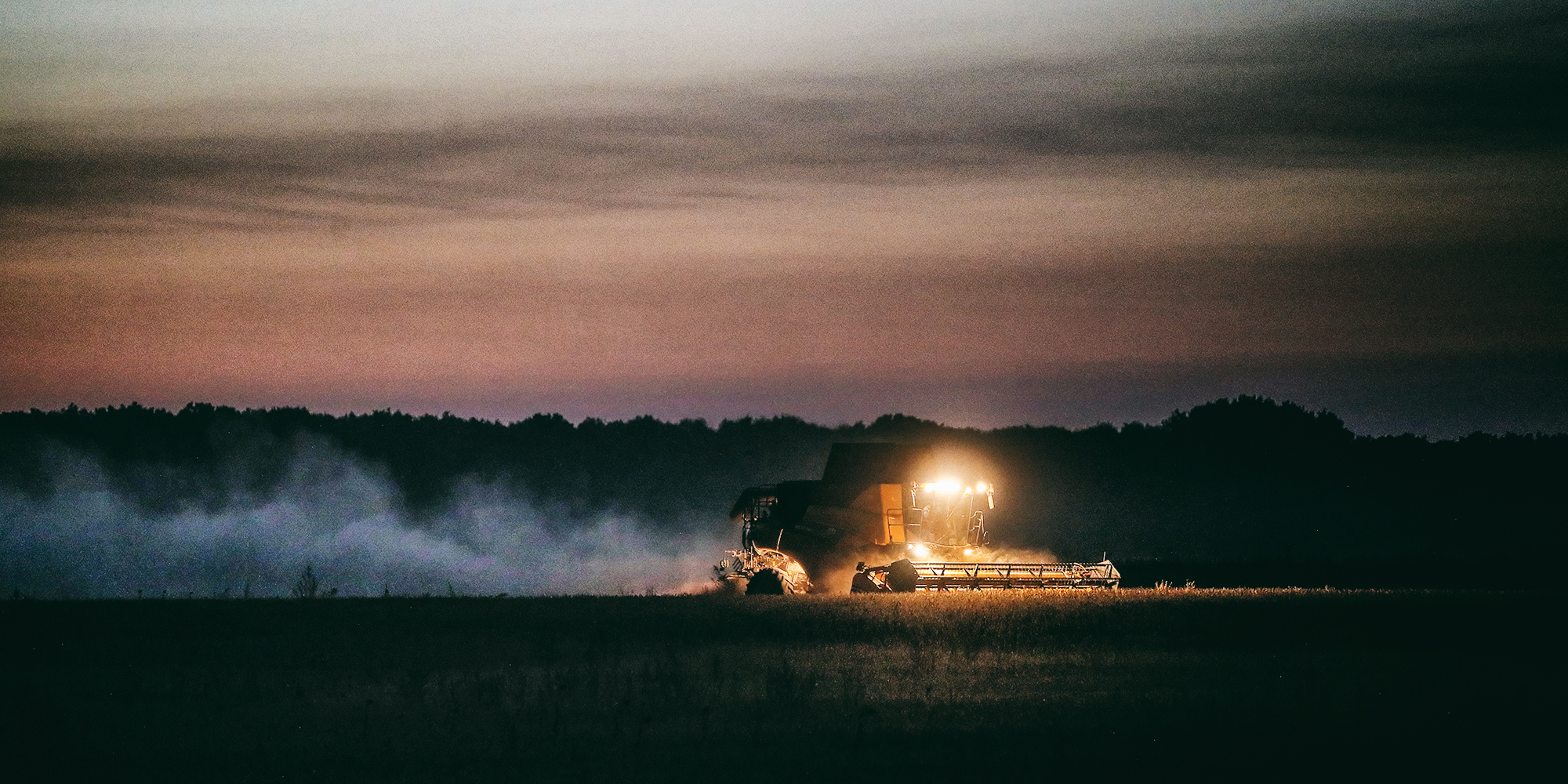RIPPLE EFFECT
Ukraine and global supply chains: Something wicked this way comes

Even without actual hostilities, the Russia/Ukraine imbroglio may have some real economic and financial impacts that can be global in nature. And thinking about this all begins with trying on a pair of trousers on sale.
The other day I was at a local shopping mall to purchase a few items. Our first stop was at a men’s clothing store to take advantage of the end of summer sale. Yes, it is still summer, but the “up to half price off” signs were already up and the crowd was working through the sale items with interest. I found several pairs of slacks that fitted perfectly and only needed to be hemmed. As I was about to pay for them, I checked those inside labels where the fibre content and place of manufacture are noted.
The trousers were from a well-known European brand whose styles are fashionable but also appropriate for someone in late-stage middle age-hood. Ah, I found the label sewn into an inseam. The material was mostly cotton, but there was a small percentage of other fibres to give the cloth some stretch. And the place of manufacture was, amazingly, Ukraine.
Given their style, those trousers were clearly not cut and stitched in one of the factories that would have churned out those boxy suits made from thick wool and polyester flannel that older Soviet Union apparatchiks were known for wearing back in an earlier age. But Ukraine, as the provider of fashionable men’s garments under the guidance of fashionable European designers — whoever would have guessed that?
Then I moved on to the pharmacy to pick up my monthly supply of necessary chronic medicines. Over the years, I have built a friendly relationship with the chief pharmacist and we often talk about local and international politics and economics, in between his serving other customers.
With the uncertainties of the Ukraine situation clearly in mind — in fact, he said that was behind his concerns this time — he solicited my view as to where he should be placing his savings. Now, disregard the reality that I am definitively not known as an investment adviser of note, and that my opinions probably should not be anybody’s oracular guide about what to do with their life’s savings.
Nevertheless, we took the conversational plunge, drawing from a broader understanding of both larger investment trends and the current Ukrainian crisis. In my mind, I drew on the standard model that has traditionally argued that in times of international tension, investors have tended to run to the US dollar (or US treasury bonds) and/or gold holdings (although the latter offers no interest earnings, only possible protection of principal).

Ukrainians attend an open military training for civilians on a training range in Kiev, Ukraine, 06 February 2022. (Photo: EPA-EFE/SERGEY DOLZHENKO)
But, of course, the question may get murkier when the US is also a key part of the question at hand. If hostilities do break out along Ukraine’s northern, southern, and eastern borders, and if the US and Nato become more deeply involved in helping Ukraine resist Russian forces, will — or should — savers still see the dollar as the best, go-to, safe haven?
To my pharmacist friend, and to the world more generally, I asked: What are the other possible safe havens? The yen? The UK pound? The euro? Commodity futures? And if so, which ones? Moreover, in the event of hostilities or even just an upward ratcheting of the tensions, how should we try to guess the future configuration of exchange rates — even if, as we noted above, the usual trend is to flee emerging market currencies (like the rand) and head towards the dollar or those other major currencies? My crystal ball was becoming increasingly unhelpful as a source for insights.
Let’s stay with this topic a bit longer and talk more directly about commodities. As an article in the 28 January edition of the Washington Post’s “Worldview Newsletter,” reported, “An invasion of Ukraine could drive up global food prices and spark unrest far from the front lines,” looking beyond the obvious questions in the headlines about the geopolitical repercussions of actual hostilities and on to the impacts on global trade from an outbreak of hostilities.
As the Post article explained, although Russia is well known as a leading exporter of primary commodities such as fuels, metals, and some agricultural goods, Ukraine is now the fourth largest global exporter of grain. Hmm. That is something most people may not have thought about yet. The article continued, “Should peace not prevail, western-gazing Ukrainians would pay the highest price. But in a worst-case scenario, the cost of a major Russian invasion of Ukraine — one of the world’s largest grain exporters — could ripple across the globe, driving up already surging food prices and increasing the risk of social unrest well beyond Eastern Europe.
“As tensions mount, one focus of economic concern is the global impact of extreme sanctions on Russia, a major exporter of agricultural goods, metals and fuel, particularly to Western Europe and China. Should the crisis escalate to the point of triggering staggering sanctions, the blow could spike prices and worsen global supply chain woes by tightening markets for commodities including natural gas and metals such as nickel, copper and platinum used in the manufacturing of everything from cars to spacecraft.”
While the global impact from those Russian exports may be fairly clear, the impact from serious hostilities on Ukrainian exports also needs to be better recognised.
The article went on to note, “[A] major Russian incursion would also affect the flow of goods from Ukraine, the world’s fourth-largest supplier of wheat and corn. A major disruption of Ukrainian exports — especially in conjunction with any interruption in even larger Russian grain exports — could pile onto a global inflationary cycle that in many countries is already the worst in decades.” I will bet few people have been thinking about that eventuality.

A grain harvester combine works in fields not far from Kiev, Ukraine, 12 September 2020. (Photo: EPA-EFE/SERGEY DOLZHENKO)
Already, global corn futures are at their highest levels since June and wheat futures have hit two-month highs. The larger problem beyond the immediate effect on Ukraine’s earnings is that some of the country’s biggest clients are fragile states in the Middle East and Africa, including Yemen, Lebanon and Libya.
Andrey Sizov, head of Russia-based consultancy SovEcon, explained that if there is an actual invasion, “that would mean big problems for all large food importers, especially in northern Africa, Iran, Sudan, Afghanistan and Egypt. The risk in all those countries of social unrest increases under this scenario.”
Meanwhile, Alex Smith, an agriculture analyst at the Breakthrough Institute, added that Ukraine’s customers include China and the European Union, “but the developing world is where Ukrainian wheat has become an essential import”.
The Washington Post article went on to note that according to Smith, “half of all wheat consumed in Lebanon — a country critically dependent on bread as a staple and slammed by a crippling economic crisis — came from Ukraine. Yemen and Libya respectively import 22% and 43% of their total wheat consumption from Ukraine. In 2020, Ukraine also supplied more than 20% of wheat consumption in Malaysia, Indonesia and Bangladesh.”
More ominously, zooming in more closely to specific parts of Ukraine, a significant share of Ukraine’s agricultural production comes from the Kharkiv, Dnipropetrovsk, Zaporizhia and Kherson oblasts, that is, regions “just beyond the parts of eastern Ukraine that are already largely under the control of Russian-backed separatists. That puts them in the early path of a Russian march to the west.”
Obviously, if an attack happens and farmers start to flee oncoming forces, Ukrainian wheat production will crater.
Smith added, “Whoever controls the land will ultimately extract its riches, but if conditions in the Russian-controlled eastern parts of Ukraine are any guide, instability and paralysis may lie over the region and seriously impact production far beyond the initial invasion.”
The income-challenged in all those places Ukraine has been exporting to up to now would then face punishing impacts on the price of their basic foodstuff.
The Post article added that a quarter of the corn purchased by China from foreign sources has been coming from Ukraine, and the Chinese are apparently already worried about the possibilities their supplies might be cut.
“Peter Meyer, head of grains analysis at S&P Global Platts, told me [the Post’s article’s author, Anthony Faiola] there’s word on the street that the Chinese have been quietly shopping around for US corn in the event the Ukrainians can’t make good on deliveries later this year.
“A short-term concern, Meyer said, is whether Russia would try to put a ‘stranglehold’ on Ukraine’s economy by blockading Black Sea exports. Longer term, images of ‘Ukrainian housewives buying guns’ and questions over whether farmers might [have] abandoned their fields to ‘fight,’ have also sowed doubts over Ukraine’s 2022 corn crop, which, Meyer said, ‘needs to be planted in the next few months.’”
The net result of all this, should actual hostilities break out, is the Russians might well act to control their own wheat exports to stabilise local food security. If the worst happens, prices in Western food stores will rise sharply as well. How much? Who knows the answer to that question?
That, of course, is one of the great imponderables from the possibility of hostilities. That would go along with interruptions to any parts of the global manufacturing supply chain in which Ukraine now has a share (such as my trousers), right along with the roiling uncertainties to foreign exchange values, future foreign investment, and potential safe havens for those with financial resources but who increasingly are becoming uncertain as to where to put those funds.
Importantly, much of the impact might yet flow out of the uncertainty of what the future holds along the Ukraine/Russia border even without actual hostilities, what with somewhere between 100,000 to 130,000 troops now on station, and with Russia’s continuing buildup of equipment and military materiel.
At this point, if one were a bettor, you might be gazing at a map and then looking particularly carefully at the short distance from the Belarus border to Kyiv. It is, after all, just a modest Sunday drive in your state-of-the-art tank or a self-propelled rocket launcher vehicle. DM
[hearken id=”daily-maverick/9072″]



















 Become an Insider
Become an Insider
Comments - Please login in order to comment.